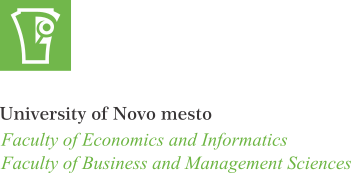Examining Human Capital as a Factor of Economic Growth
Keywords:
gospodarska rast, človeški kapital, izobraževanje, napredek, družbena blaginjaAbstract
Researchers define human capital as the knowledge and skills of people gained through on-the-job education and training, and work experience. The question of the nature and causes of the wealth of nations since Adam Smith has been one of the important questions in examining the factors of economic growth. The research seeks to identify and at the same time operationalize human capital as a recognized driver of economic growth. Based on the secondary data and the results of the principal component analysis, we found two components: the first links economic growth with human capital, and the second with economic and technological factors. Based on the results obtained, we confirm that human capital has a statistically significant positive effect on economic growth.
References
Acaroğlu, H. (2014). The Relation between Human Capital and Economic Growth in MENA Countries. Journal of Public Administration and Governance, 4, št. 4, str. 205–216.
Angrist, J. D. and Pischke, J. S. (2009). Mostly harmless econometrics: an empiricist's companion. Oxford: Princeton University Press.
Barro, R. J. (2008). Macroeconomics a modern approach. Mason: Macmillan Inc.
Cvetek, R. (2017). Raziskujmo medsebojne odnose. Ljubljana: Teološka fakulteta.
Field, A. (2009). Discovering statistics using SPSS. London: SAGE Publications Ltd.
Gričar, S. (2018). Investiranje v visokošolske učitelje. Revija za ekonomske in poslovne vede, 5, št. 1, str. 58–77.
Hanushek, E. (2013). Economic growth in developing countries: The role of human capital. Economics of Education Review, št. 37, str. 204–214.
Jesenko, J. and Jesenko, M. (2007). Multivariantne analize. Kranj: Založba Moderna organizacija.
Lilles, A. and Rõigas, K. (2017). How higher education institutions contribute to the growth in regions of Europe. Rouledge, 42, št. 1, str. 11–13.
Mishkin, F. S. (2012). Macroeconomics. Harlow: Person Education Limited.
Parkin, M. (2012). Macroeconomics. Harlow: Person Education Limited.
Pelinescu, E. (2015). The impact of human capital on economic growth. Procedia Economics and Finance, 22, str. 184–190.
Pridobljeno dne 12. 4. 2019 s svetovnega spleta: http://appsso.eurostat.ec.europa.eu/nui/show.do?dataset=edat_lfse_03&lang=en.
Pridobljeno dne 7. 4. 2019 s svetovnega spleta: http://europa.eu/rapid/press-release_IP-19-850_sl.htm.
Pridobljeno dne 7. 4. 2019 s svetovnega spleta: https://ec.europa.eu/eurostat/tgm/table.do?tab=table&init=1&language=en&pcode=tec00115&plugin=1.
Pridobljeno dne 7. 4. 2019 s svetovnega spleta: https://ec.europa.eu/eurostat/tgm/table.do?tab=table&init=1&plugin=1&pcode=sdg_08_10&language=en.
Queirós, A. S. S. and Teixeira, A. A. C. (2014). Economic Growth, Human Capital and Structural Change. Elsevier, št. 549, str. 2–30.
Rebernik, D. (1996). Uporaba faktorske analize pri proučevanju socialne diferenciacije mestnega prostora. Geografski vestnik, 68, str. 223–245.
Samuelson, P. A. and Nordhaus, W. D. (2002). Ekonomija. Ljubljana. GV Založba.
Schütt, F. (2013). The importance of Human Capital for Economic Growth. Bremen: IWIM.
Senjur, M. (2001). Makroekonomija. Maribor: MER Evrocenter.
Starc, J. and Stopar, I. (2017). Human capital in healthcare institutions: the case of Slovenia. HealthMed, 11, št. 1, str. 10–17.
Šušteršič, J. and Žižmond, E. (2016). Makroekonomska analiza in ekonomska politika. Celje: Mednarodna fakulteta za družbene in poslovne študije.
Tsamadias, C. and Prontzas, P. (2014). The effect of education on economic growth in Greece over the 1960–2000 period. Education Economics, 20, št. 5, str. 522–537.
Uppenberg, K. et al. (2009). Innovation and economic growth. R & D and the financing of innovation in Europe, 14, št. 1, str. 10–35.
Van Hiel, A. et al. (2018) Can education change the world? Education amplifies differences in liberalization values and innovation between developed and developing countries. Plos One, 13, št. 6, str. 1–8.
Downloads
Published
How to Cite
Issue
Section
License
Copyright (c) 2022 Journal of Economic and Business Sciences

This work is licensed under a Creative Commons Attribution 4.0 International License.




